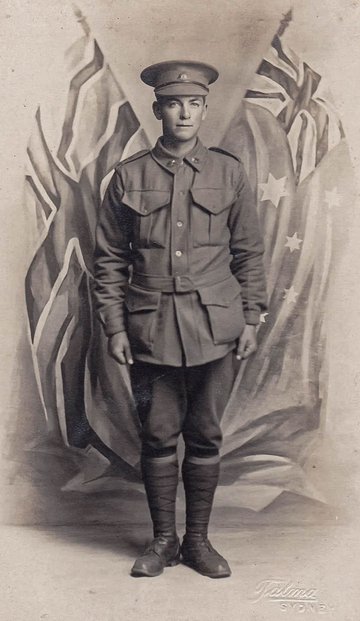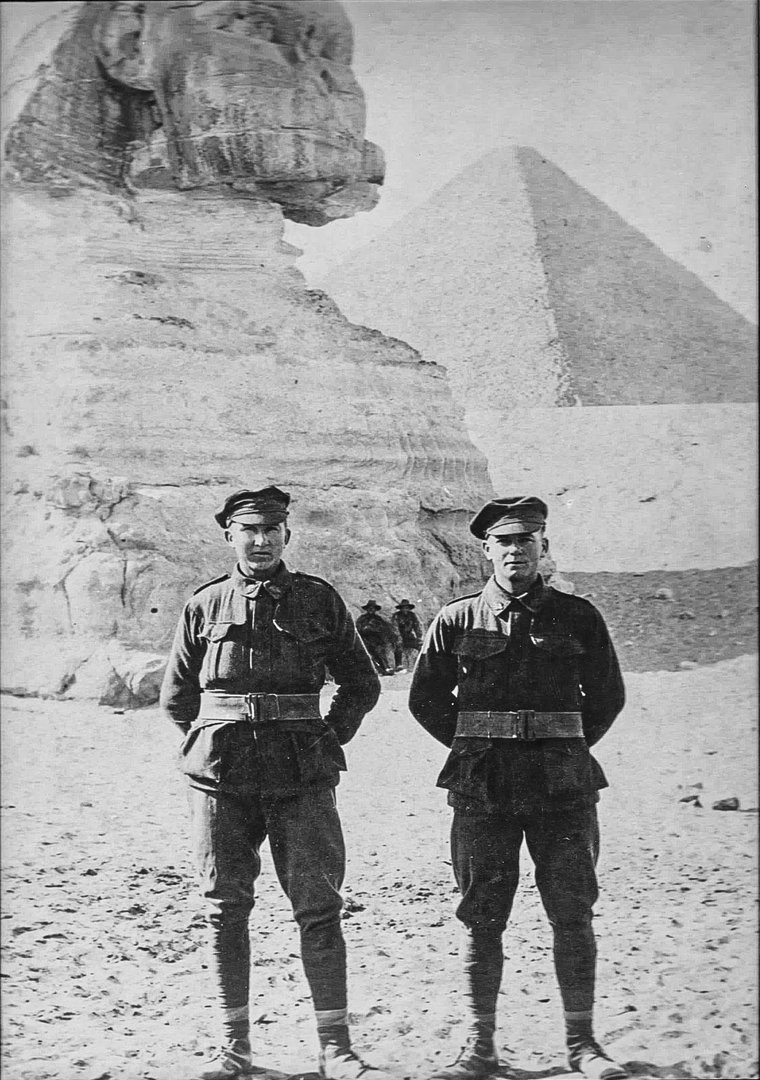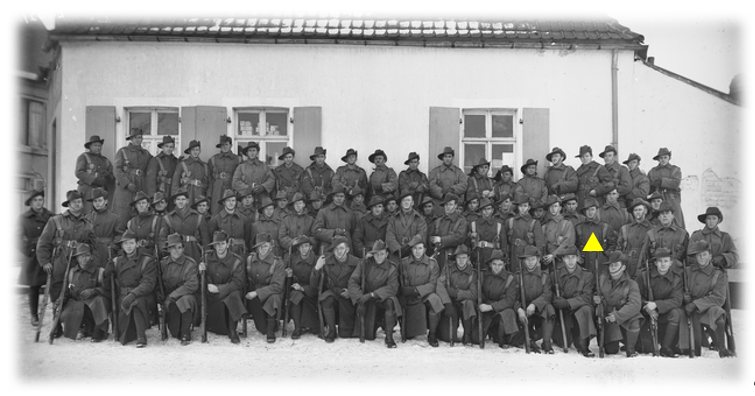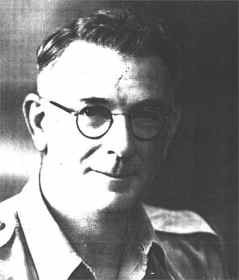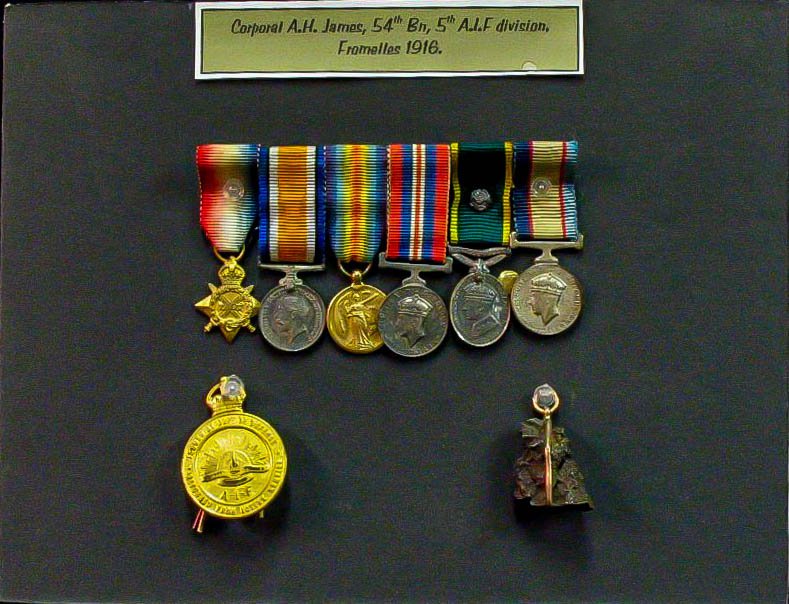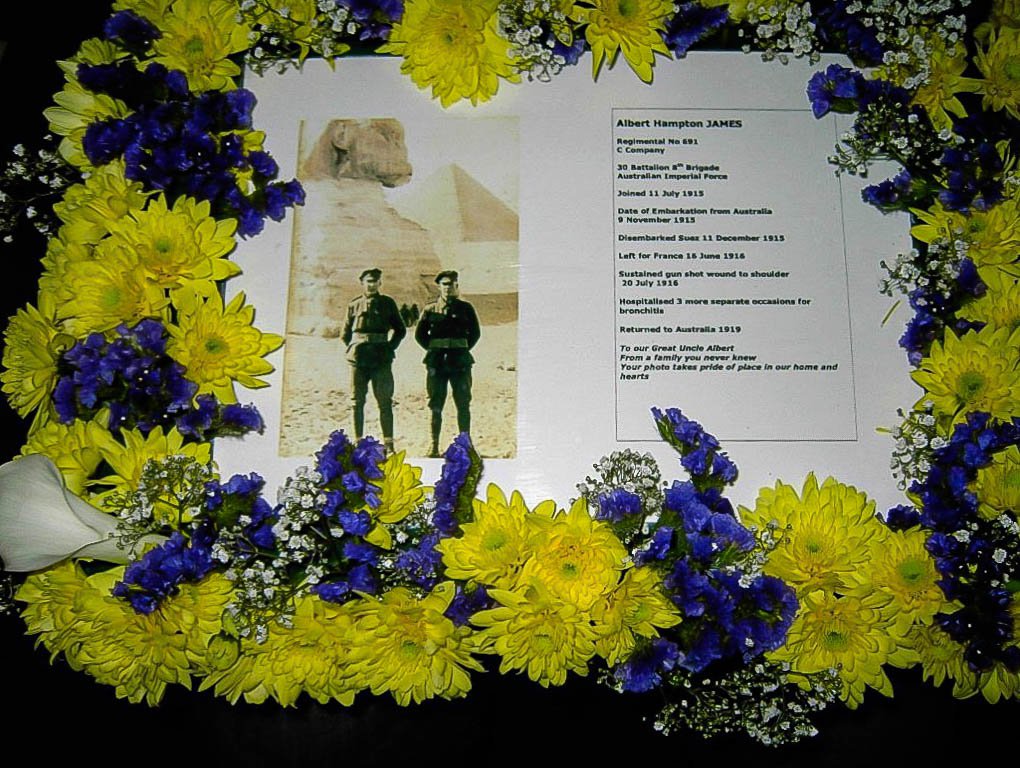Albert’s letter home – wounded at Fromelles
Saturday 7 October 1916, page 10 HOW ALBERT JAMES CAUGHT IT. Australians Cut Up in a Charge.
Private A. H. James, son of Mr. and Mrs. A. J. James, of Ross street, Parramatta, formerly of Castle Hill, is now in hospital in Leeds, England. He wrote home on August 11:
"I was wounded on July 19th. We were fighting near Armentieres, and were ordered to take the German trenches opposite, which of course meant a charge; and charge we did, but am sorry to say we were practically cut to pieces by Fritz's machine-guns and artillery. All the same we took the trenches, but owing to not being able to get enough ammunition across no man's land (between ours and the German trenches) we had to give the trenches up again, much to our sorrow.
I was in the Germans' second line of trenches when I was hit with a piece of shrapnel. It went in my shoulder at the back and completely put me out of action. I got a terrible shock when I was hit, the force of the blow knocking me down. One of the boys bandaged me up as best he could. I don't know who it was that did it though. This was at about 6 o'clock at night, but it was 4 o'clock next morning before I could get back to our own trenches. I don't know what happened to Ray Paul or any of the others, as I never saw them after we charged, but I hope they are all right, but I'm afraid they ___.
When I got back to our trenches I managed to get to the dressing station, where they bandaged me up properly. I was then taken to another dressing station where I received further treatment and was innoculated. I was then taken to a field hospital and put to bed. I no sooner hit the bed than I was asleep, for I had hardly any sleep for about a week before that. Next morning we were sent by train to the 8th Stationary Hospital at Boulogne, where we stayed until next morning, when I was examined by the doctor and sent to England. We were landed at Dover and sent by train all the way to Leeds in Yorkshire. This is a very nice place, and I am getting the best of treatment. For the first week I was very bad; my temperature was up to 105 deg. The nurses tell me it was a near go for me.
On the 26th July, my 21st birthday, I was operated on. After being X-rayed and the position of the shrapnel (which was inside) found, the doctor soon had it out, but he put an awful gash in my back from the top of the shoulder right round under the arm, where he made a big hole— almost got an egg-cup in it. For a long time I had a big tube right through me, but, thank God, I have it out now. I cannot use my arm yet to any extent, but it won't be long before it is right, so the doctor says. This was a nice little birthday present, wasn't it?
These good people treat Australians as if they were lords or something else. They cannot do enough for us. After I was wounded I lost everything I had, even my bit of money, so am stony broke, and the authorities won't pay us any until after we are convalescent. I suppose you will be putting my photo in 'The Argus' now as a wounded soldier? Ha! ha!
Source: HOW ALBERT JAMES CAUGHT IT. (1916, October 7). The Cumberland Argus and Fruitgrowers Advocate (Parramatta, NSW : 1888 - 1950), p. 10. Retrieved May 23, 2020, from http://nla.gov.au/nla.news-article86077390
